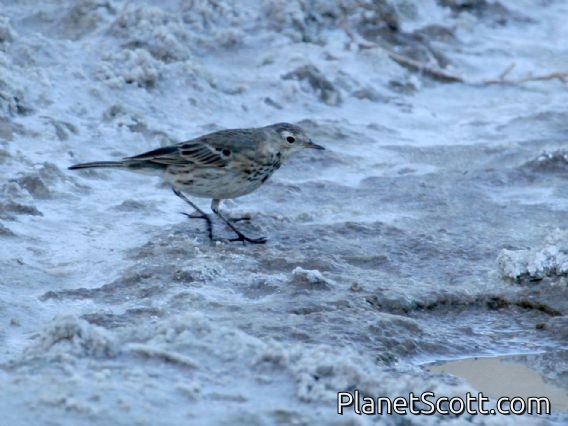American Pipit (Anthus rubescens)

American Pipit (Anthus rubescens)
×


American Pipit (Anthus rubescens)
About American Pipit (Anthus rubescens)
- Kingdom: Animals
- Phylum: Chordates
- Class: Birds
- Order: Perching Birds
- Family: Wagtails and Pipits
The American pipit, formerly known as the buff-bellied pipit, is a small songbird native to North America. It was first described by Marmaduke Tunstall in his 1771 Ornithologia Britannica. It was formerly classified as a form of the water pipit. The former subspecies, Siberian pipit, is now considered a distinct species.
Source: Wikipedia
Visits
-
2007-01-22
Palo Alto Baylands, United States of America -
-
2009-11-22
Palo Alto Baylands, United States of America -
2010-01-03
Sacramento National Wildlife Refuge, United States of America -
2012-07-12
Yellowstone National Park, United States of America -
2014-02-22
Panoche Valley, United States of America -
2014-07-17
Nome--Safety Sound, United States of America -
2015-01-02
Pixley NWR, United States of America -
2015-01-03
Mendota Wildlife Area, United States of America -
2015-01-04
Panoche Valley, United States of America -
-
-
-
-
-
-
2024-10-25
Elkhorn Slough, United States of America



